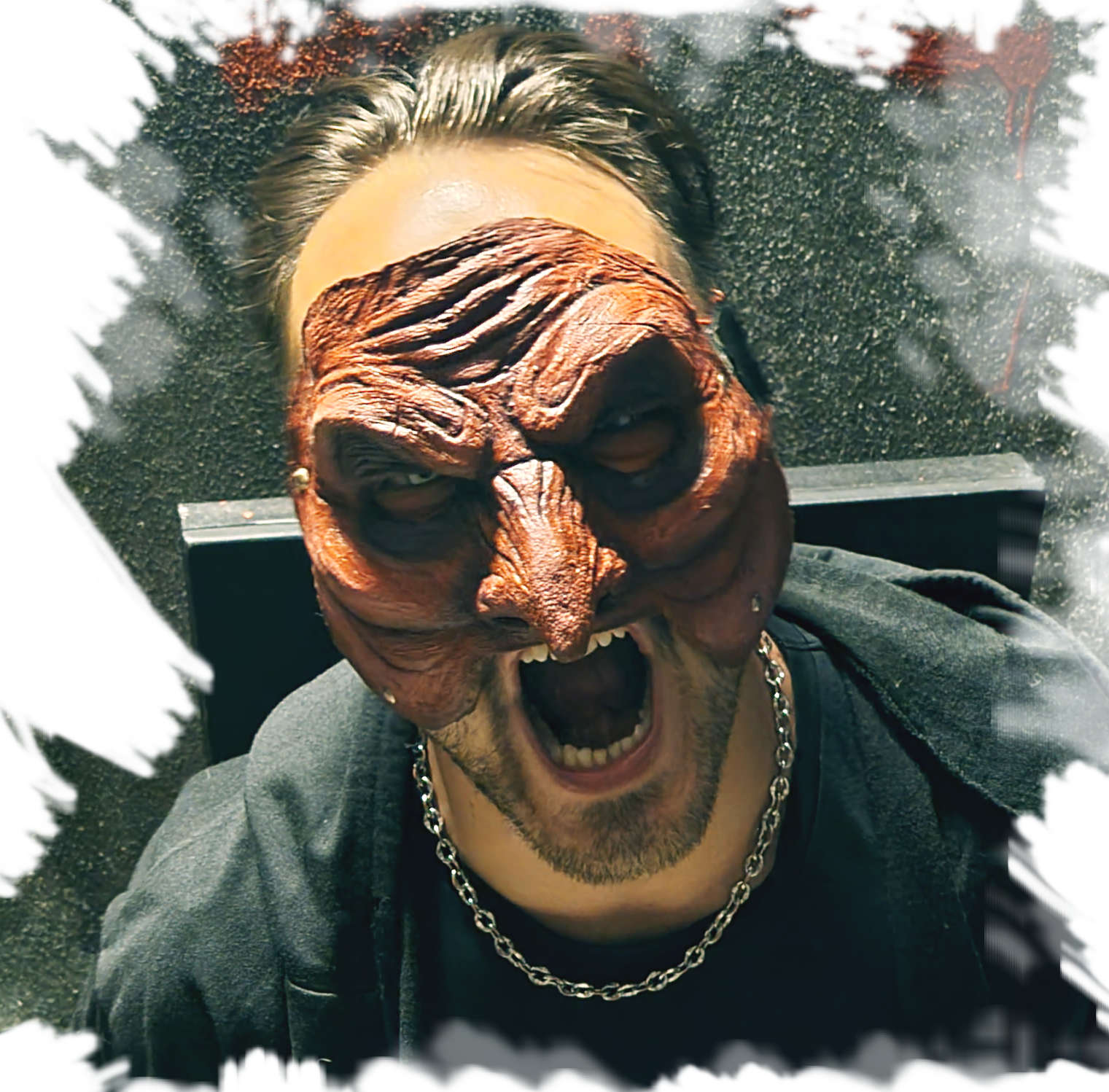
RED
This mask represents rage, one of Man's primary emotions. The traits of Red's mask take direct inspiration from Pulcinella but get twisted by a furious expression. Black, the classic color that stands out for the Pulcinella's mask, is replaced by a deep blood red and scarlet eyes that convey nothing but pure rage. The artist is inspired by the figure of Pulcinella, one of the most famous masks of the Commedia dell'Arte, in homage to the theater. Even though Pulcinella has uncertain origins as a mask, it seems to originate from a character in the Atellane, a folk play of ancient Rome. It is also possible that Pulcinella takes inspiration from Puccio d'Aniello, a farmer from Acerra in 1600 who became a jester and joined an itinerant company passing by his village. Pulcinella has also been compared to the historical figure of Masaniello, in whom we find again the element of rage. He had a central role in the Neapolitan riot of 1647 when the people rose against the Spanish monarchy. The iconic symbol of Masaniello's figure is his red cap, which stands as a symbol for the people's voice.

shout
This mask represents alienation, referring to the process of Man's estrangement regarding social relationships and material objects, as in its sociological definition. The word often indicates unsatisfaction and the existential unease of the modern Man, rooted in the industrial society that cast them away from their natural behaviors. The artist takes inspiration from the Man in the Iron Mask, a famous character of The Vicomte of Bragelonne, the novel by Dumas. The figure perfectly incarnates the concept of alienation since he lives as a prisoner, constantly wearing the famous iron mask and ending isolated from the rest of the world without a known identity, still shrouded in mystery nowadays.


lay
This mask represents the relationship with oneself. It was realized as a reflecting mirror that shows what we truly are. This idea is rooted in the "looking glass self" concept from the U.S. sociologist C.H. Cooley, who claims the way we see and represent ourselves does not depend only on our self-perception, but also on how we are perceived by other people: as if people were mirrors who return a different image every time depending on the person we are confronting with.

Rïøt
This mask represents duality, referring to the mind-body relationships in contemporary philosophy. The mask is split in half: one half has human but anonymous, gaunt traits; the other half is mechanical, robotic, and smiling. The mind-body relationship switches to a man-machine one, in which technology can replace the human body. It thus becomes the new way to engage with reality. The human face in the mask is expressionless and lets the mechanical part do the communication and express itself.


Creepy Boy
This mask represents fear, another primary emotion of the human being. It is a defensive emotion triggered by the feeling of danger. The sensation of fear is daily perceived for different reasons and in different scales of intensity: fear of aggression, the overload of crime news by the media, fear for one's future, and more. Fear is often exploited to influence masses to obtain agreement or to drive the attention away from the actual social antagonists. To create this mask the artist takes inspiration from the painting The Scream by Munch. Few people know that the painting is based on Munch's experience, according to which he heard an appalling shriek during a promenade.

kazy
This mask represents madness as a lack of adjustment to society. The definition of madness can change according to historical context, culture, and current social conventions. In contemporary society, it may be considered insane something or some behavior that was not perceived as such in the past, or vice versa. An iconic representation of madness is undoubtedly given by the Mad Hatter, who yet does not convey the idea of madness as intended by the band. Still referring to Lewis Carrol's universe, it is rather the Cheshire Cat that perfect incarnates the idea of "conscious madness": the cat defines itself as mad, but the reader soon realizes it is the most sensible one in the whole novel, impartial and capable of guiding Alice though her journey. The leading role suits well the band's drummer, who marks time like an orchestra director.

